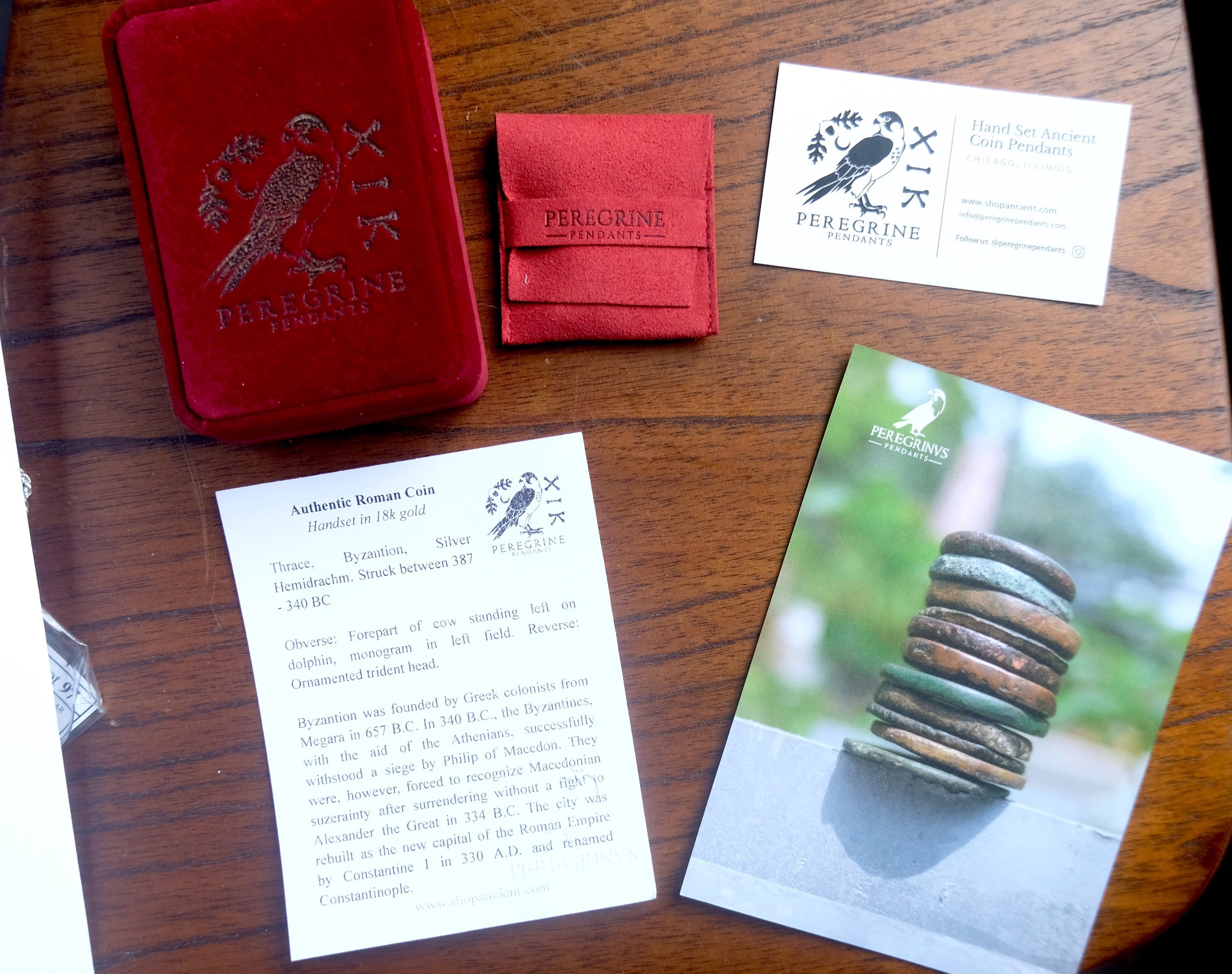 Image 1 of 5
Image 1 of 5

 Image 2 of 5
Image 2 of 5

 Image 3 of 5
Image 3 of 5

 Image 4 of 5
Image 4 of 5

 Image 5 of 5
Image 5 of 5






Julia Paula - Concordia
This stunning pendant measures about 18 mm in width and 24 mm from the top of the bail to the bottom of the pendant. See the image with current currency for an indication of its size.
-- Coin information
Roman Imperial
Julia Paula, silver denarius
Rome mint, 222 AD under Elagabalus
Obverse: draped bust. Reverse: Concordia seated left, holding patera; star
In ancient Roman religion, Concordia (means "concord" or "harmony" in Latin) is the goddess who embodies agreement in marriage and society. Her Greek equivalent is usually regarded as Harmonia, with musical harmony a metaphor for an ideal of social concord or entente in the political discourse of the Republican era. She was thus often associated with Pax ("Peace") in representing a stable society.[1] As such, she is more closely related to the Greek concept of homonoia (likemindedness), which was also represented by a goddess.
Concordia Augusta was cultivated in the context of Imperial cult. Dedicatory inscriptions to her, on behalf of emperors and members of the imperial family, were common
This stunning pendant measures about 18 mm in width and 24 mm from the top of the bail to the bottom of the pendant. See the image with current currency for an indication of its size.
-- Coin information
Roman Imperial
Julia Paula, silver denarius
Rome mint, 222 AD under Elagabalus
Obverse: draped bust. Reverse: Concordia seated left, holding patera; star
In ancient Roman religion, Concordia (means "concord" or "harmony" in Latin) is the goddess who embodies agreement in marriage and society. Her Greek equivalent is usually regarded as Harmonia, with musical harmony a metaphor for an ideal of social concord or entente in the political discourse of the Republican era. She was thus often associated with Pax ("Peace") in representing a stable society.[1] As such, she is more closely related to the Greek concept of homonoia (likemindedness), which was also represented by a goddess.
Concordia Augusta was cultivated in the context of Imperial cult. Dedicatory inscriptions to her, on behalf of emperors and members of the imperial family, were common
This stunning pendant measures about 18 mm in width and 24 mm from the top of the bail to the bottom of the pendant. See the image with current currency for an indication of its size.
-- Coin information
Roman Imperial
Julia Paula, silver denarius
Rome mint, 222 AD under Elagabalus
Obverse: draped bust. Reverse: Concordia seated left, holding patera; star
In ancient Roman religion, Concordia (means "concord" or "harmony" in Latin) is the goddess who embodies agreement in marriage and society. Her Greek equivalent is usually regarded as Harmonia, with musical harmony a metaphor for an ideal of social concord or entente in the political discourse of the Republican era. She was thus often associated with Pax ("Peace") in representing a stable society.[1] As such, she is more closely related to the Greek concept of homonoia (likemindedness), which was also represented by a goddess.
Concordia Augusta was cultivated in the context of Imperial cult. Dedicatory inscriptions to her, on behalf of emperors and members of the imperial family, were common
You Might Also Like






















